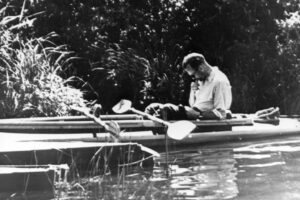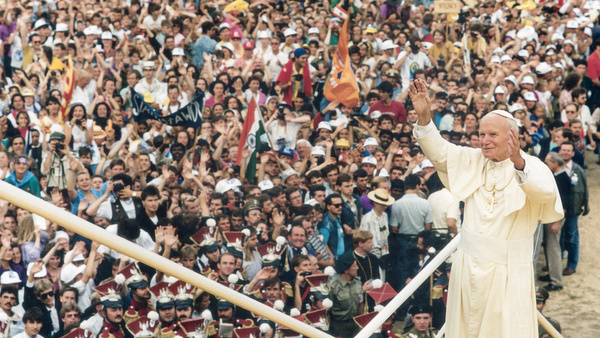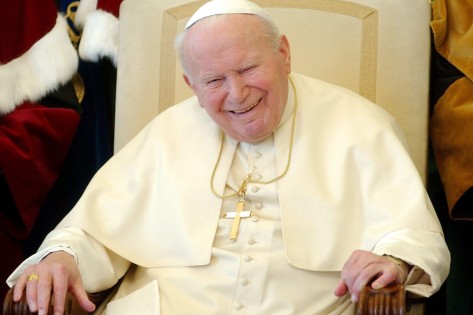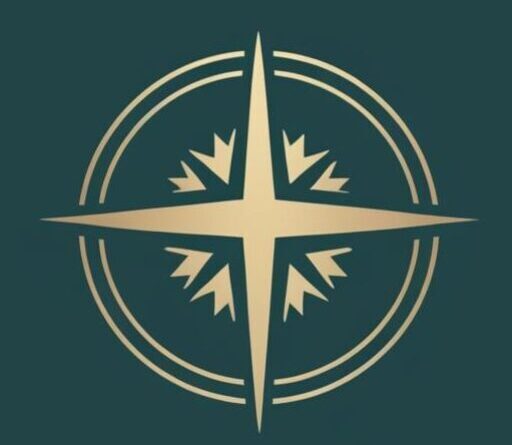Have you ever felt a quiet hope flicker inside, like a candle refusing to gutter out, even when the winds howl? That was Saint John Paul II—a man who turned pain into power and faith into a beacon that still shines bright. His life is like a bridge spanning stormy waters: it rises from a war-torn Polish village, stretches across a turbulent century, and touches down in hearts everywhere, especially here in America. For you, an American Catholic who’s heard his rallying cry “Be not afraid!” or seen his stooped figure in prayer, come walk this bridge with me. Let’s explore a pope who faced down empires, forgave his enemies, and showed us that holiness isn’t just for stained-glass saints—it’s for us, too.
The Kid from Wadowice: Growing Up in Shadows
Karol Józef Wojtyła came into the world on May 18, 1920, in Wadowice, a small town nestled in Poland’s rolling hills. His dad, Karol Sr., was a stern army officer; his mom, Emilia, a gentle soul who filled their home with love and hymns. Life dealt hard blows early—Emilia died when Karol was 9, his older brother Edmund, a doctor, followed at 12 from scarlet fever, and by 21, his father was gone too, leaving him alone in a cold apartment. “I learned young that the cross is woven into love,” he’d later write, a truth carved into his bones.

But Karol didn’t crumble. He kicked a soccer ball with friends, scribbled plays, and soaked up books—poetry, philosophy, anything he could grab. Schoolmates called him “Lolek,” a wiry kid with a quick laugh and a knack for acting. Then came 1939: Nazi tanks rolled in, and Poland fell. Karol worked in a quarry, hauling stones under a gray sky, and later in a chemical plant, dodging Gestapo raids. At night, he studied in secret, joining an underground theater group to keep Polish culture alive. A little-known story: in 1944, he hid in a basement as Nazis swept his street, clutching a rosary his father left him—a close call that whispered of a bigger plan.
The Quiet Rebel: A Priest in the Making
By 1942, Karol heard a call he couldn’t shake. He slipped into an underground seminary run by Archbishop Adam Sapieha, risking death if caught. Ordained on November 1, 1946, in a Poland now under Soviet grip, he started small—saying Mass in rural churches, skiing with youth groups, and writing poems under pen names. His parishioners loved his warmth, the way he’d sit by a fire and talk about God like an old friend. In 1958, he became auxiliary bishop of Kraków, then archbishop in 1964, a steady hand guiding his flock through communist clampdowns.
At Vatican II, Karol’s voice stood out—young, sharp, pushing for human dignity in a changing Church. He penned essays on love and freedom, ideas that caught Rome’s eye. On October 16, 1978, at 58, he stepped onto the world stage as Pope John Paul II—the first non-Italian pope in 455 years, named for his predecessors John XXIII and Paul VI. “Faith is the strength that sets us free,” he’d said years before, a creed he’d soon live out loud. That day, St. Peter’s Square erupted—here was a pope from behind the Iron Curtain, a sign hope could pierce even the thickest walls.
The World’s Shepherd: A Papacy Without Borders
John Paul II didn’t ease into the papacy—he sprinted. In June 1979, he returned to Poland, drawing millions in Warsaw and Kraków. His words—“Be not afraid!”—lit a fuse under the communist regime, sparking the Solidarity movement that would help topple it. He crisscrossed the globe—129 countries, more than any pope before—kissing tarmacs from Manila to Mexico City. In the U.S., he visited seven times between 1979 and 1999, charming crowds in New York, Denver, and St. Louis. “America’s a beacon of liberty, but it needs God to shine true,” he told a sea of faces in 1999, his voice trembling but firm.


His papacy wasn’t all cheers. On May 13, 1981, a Turkish gunman shot him in St. Peter’s Square—two bullets tore through his abdomen. He survived, crediting Our Lady of Fatima, and later forgave his would-be killer in a prison cell, a moment that stunned the world. Parkinson’s crept in during the ‘90s, bending his frame and slurring his speech, but he kept going—writing, praying, leading. He penned 14 encyclicals, like Redemptor Hominis on human dignity, and canonized 482 saints, more than all popes before him combined. A fun fact: in 2002, he added the Luminous Mysteries to the Rosary, a gift to deepen our prayer—a tweak only a poet-pope could dream up.
The Voice of Life: A Prophet for Our Times

John Paul II was a lion for life—from womb to tomb. He railed against abortion and the death penalty, urging America to choose mercy over vengeance. His 1995 encyclical Evangelium Vitae became a battle cry for the pro-life movement, a call echoed in U.S. parishes today. He didn’t just talk—he acted. In Poland, his visits fueled Solidarity, a bloodless revolution that cracked the Soviet bloc by 1989. In Cuba, he faced Fidel Castro in 1998, planting seeds of faith in communist soil.
He loved the young—World Youth Day, launched in 1985, drew millions, including a massive 1993 gathering in Denver that reshaped American Catholic youth culture. Cardinal Joseph Ratzinger (later Benedict XVI) said at his funeral: “John Paul II was the conscience of a century starved for soul” (Ratzinger, 2005). When Parkinson’s tightened its grip, he let the world see his struggle—no hiding, just a pope leaning on a cross, showing us how to carry ours.
He died on April 2, 2005, at 84, in his Vatican apartment, whispering “Amen” as millions watched via TV. At his funeral, the crowd chanted “Santo Subito!”—Saint Now!—a plea that wouldn’t wait.
The Saint of Hope: John Paul II’s Glow Today
Beatified by Benedict XVI on May 1, 2011, and canonized by Pope Francis on April 27, 2014, John Paul II’s feast day, October 22, fills churches with his spirit. In the U.S., his mark is everywhere—St. John Paul II Parish in Illinois, statues in D.C., even a shrine in Washington where his relics draw pilgrims. “He showed us holiness is real, right here, right now,” said Francis at his canonization (Homily, 2014). Americans love him—his seven visits left stories: in Boston, he hugged a kid with Down syndrome; in L.A., he danced with teens. He’s a father figure, especially for Polish-Americans and youth who grew up chanting his name.

His writings—Theology of the Body, Crossing the Threshold of Hope—shape classrooms and retreats. His “Be not afraid!” is a lifeline for a nation wrestling with division. Maybe you’ve felt it—his nudge to step up, to trust, to hope when everything says give up.
Steps of a Humble Giant: John Paul II’s Life Unraveled
Let’s stroll through the steps John Paul II left behind—each one a plank on that bridge of faith, sturdy yet human. His path winds through loss, courage, and grace—here’s how it unfolded:
- Birth (May 18, 1920): Born in Wadowice, Poland, into a home of love and loss.
- Priesthood (November 1, 1946): Ordained in secret, a spark in Soviet gloom.
- Papacy Begins (October 16, 1978): Elected John Paul II, a global jolt.
- Poland Visit (1979): Ignited a nation, cracking communism’s shell.
- Assassination Attempt (May 13, 1981): Shot, survived, forgave—a miracle of mercy.
- Death (April 2, 2005): Passed in peace, the world at his bedside.
- Canonization (April 27, 2014): Named a saint, his light undimmed.

I’m Jonathan Raeder, scholar of philosophy and the Catholic faith, deeply dedicated to exploring the teachings and traditions of the Church. Through years of study and reflection, I have gained a thorough understanding of Catholic philosophy, theology, and spirituality. My intention is to connect intellectual reflection with lived faith, shedding light on the richness of Catholic thought for all who wish to do so.

